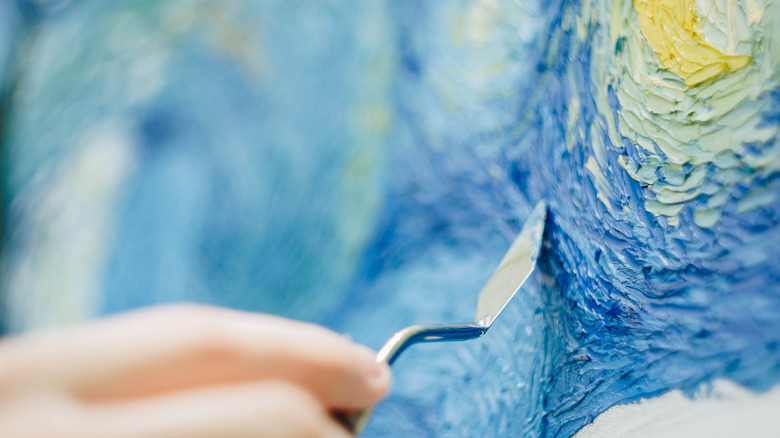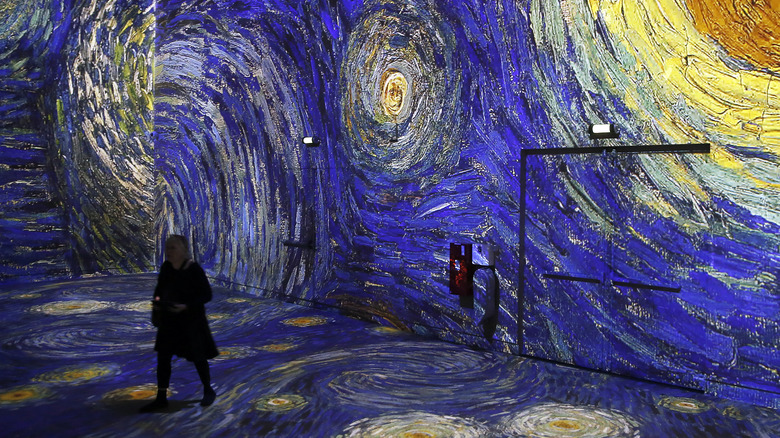Here's How Van Gogh Really Felt About The Starry Night
The painting, "The Starry Night," continues to intrigue people with its swirling blues and yellows creating an unforgettable nighttime sky over a slumbering village. It is so recognized that in 2019, the Vincent Van Gogh piece was the third-most-searched painting on Google, according to CNN ("Mona Lisa" and "The Last Supper" were the first two, in case you are wondering). The painting even inspired an interactive event, the immersive Van Gogh experience, where fans wander within an animated projection of the star-studded work as music plays, said ArtNet. Five versions are touring the United States.
The origin of the piece, though, happened during a hard moment of Van Gogh's life: his stay at the Saint-Paul-de-Mausole asylum where he battled paranoia, hallucinations, and depression. At the hospital, located near Saint-Rémy-de-Provence, Van Gogh had a studio and he began using darker colors, similar to the hues he favored during the start of his career. "The Starry Night," completed in 1889, includes lots of browns, grays, and blues. (from The Van Gogh Gallery). The view inspired him, and he wrote to his brother, Theo, saying, "This morning I saw the country from my window a long time before sunrise, with nothing but the morning star, which looked very big" (via Art and Object).
While Van Gogh did achieve some success during the end of his life, he spent much of his life as an unknown artist, reported "Art and Object." In fact, Van Gogh was often his worst critic.
Van Gogh finally finds fame
Although Van Gogh made more than 850 paintings and about 1300 paper sketches and drawings, he sold just a few of his pieces during his life, said Art and Object. His art career only launched in 1880 when the 27-year-old started taking a class at the Académie Royale des Beaux-Arts. The artist soon left after he landed last place in a competition, noted Van Gogh Route.
He continued painting for the next 10 years of his life until his death at 37 by suicide in 1890—a year after he created "The Starry Night." Van Gogh never saw his painting become iconic. He believed it a failure, reported Mental Floss, quoting from a letter he wrote to his brother, Theo: "All in all the only things I consider a little good in it are the Wheatfield, the Mountain, the Orchard, the Olive trees with the blue hills and the Portrait and the Entrance to the quarry, and the rest says nothing to me."
After his brother passed away, Theo, committed to popularizing Van Gogh's work. But he died soon after him, leaving behind his wife, Johanna, and his infant son. She continued Theo's mission, and organized exhibitions to sell the many paintings Van Gogh left behind. Joanna also published his letters to Theo in 1914. By the time of her death in 1925, Van Gogh's work was housed in museums throughout the globe and he had become a phenomenon (from the Van Gogh Museum).

